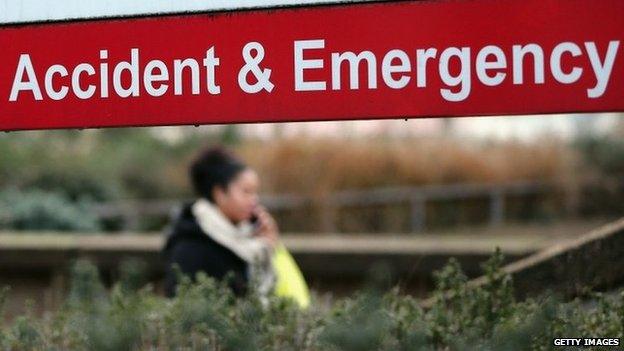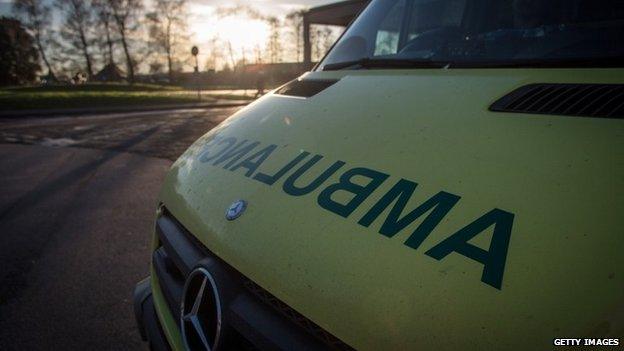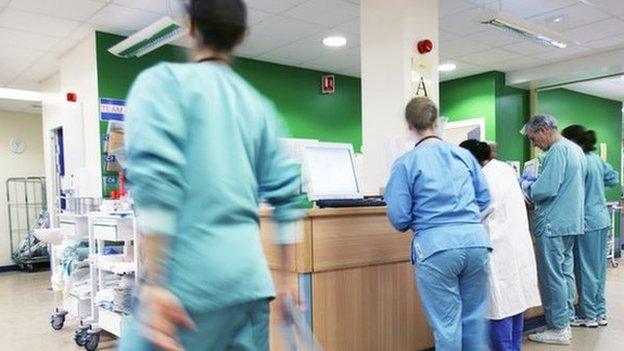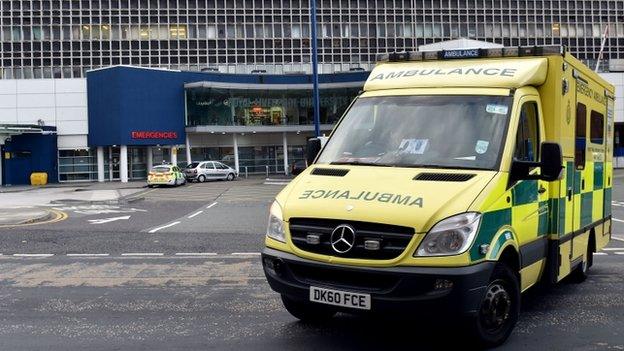NHS: A testing week for the health service
- Published

It's been a turbulent week for the NHS - and the new year has barely begun.
Few could have predicted - in the finals days of 2014 - the tidal wave of patients that would flow into almost every accident and emergency unit once the new year holiday had ended.
And news that Circle, the poster boy for private involvement in the NHS, was throwing in the towel before the week was out came as a genuine shock.
The build-up of pressures in the weeks before Christmas had become increasingly obvious. Health infrastructure was looking stretched, especially ambulance services.
NHS chiefs went off for Christmas with fingers crossed, knowing that an unexpected gust of wind could shake the foundations of the system.
They could hardly have anticipated the gale which blew up on Monday.
It could have been the fact that GP surgeries were opening up after the weekend and referring more patients to hospital, or that people were holding off with their health problems till after the holiday season.
With social care scaled down because of staff holidays, difficulties discharging patients into the community intensified.
There was no obvious factor. But hospital managers were shocked by the surge in patients throughout Monday and Tuesday.

One boss of a trust, which has prided itself on meeting the four-hour A&E targets, told me he had considered declaring a major incident to focus on clearing the backlog.
Trolleys with patients delivered by ambulance were lined up down corridors. For many A&E and ambulance staff it was the busiest-ever shift.
It was no surprise that about a dozen hospitals had announced "major incidents" by Tuesday - a mechanism for focussing all staff on discharging patients who were fit enough to leave, in order to clear beds for incoming casualties.
The backlog at some hospitals was starting to clear over the next couple of days and some could relax their high alert warnings.
But what worried bed managers was that the system had creaked so much without any severely cold weather or obvious rise in flu cases.
This week's wave of pressure on A&E won't show up in the official figures till next Friday.
The numbers for the week ending 4 January had shown another fall, and a four-year low, in the percentage of patients treated within four hours.
Things could stabilise or improve. But equally NHS managers are concerned that weather or viruses could take their toll in January and February.
Critical report
Unprecedented patient numbers was a factor quoted by Circle in their decision to pull out of the Hinchingbrooke contract.
The health landscape had changed considerably since the contract was first drawn up, the company said - and it was no longer viable.
More light on Circle's motives was shed with the publication of a damning Care Quality Commission report, rating Hinchingbrooke as "inadequate" and recommending the hospital was put into a "special measures" monitoring regime.
Circle criticised the regulator and said it disputed the findings, but it's hard to see how the company could have continued at Hinchingbrooke under special measures.
The conclusion at the end of a dramatic week in the health world?
There's even more uncertainty over two of the key issues facing the NHS - whether it can cope with winter pressures before spring arrives, and just how the role of private providers in the health service will develop?
Welcome to 2015.
- Published7 January 2015

- Published7 January 2015
